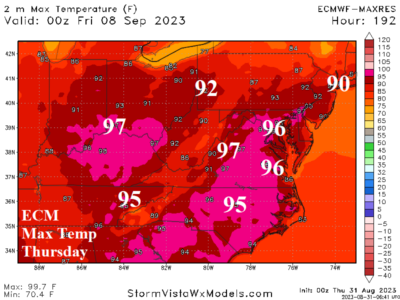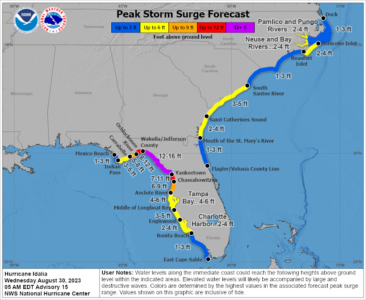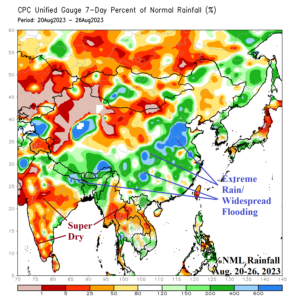09/04/2023, 1:14 pm EDT
In today's U.S. Holiday Report, significantly cooler adjustments are made for next week's forecast. However, of concern is an emerging tropical disturbance in the east-central North Atlantic tropics given a 90% chance to become a tropical cyclone by NOAA and projected to reach major hurricane intensity in 4-5 days by tropical cyclone models. Operational models suggest an East Coast threat in 10 days.
![Climate-Impact-Company-logo-sm[1]](https://climateimpactcompany.com/wp-content/uploads/2023/08/Climate-Impact-Company-logo-sm1.png)



